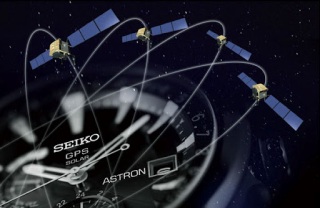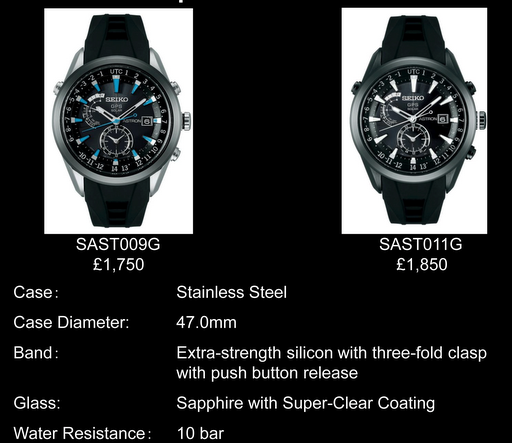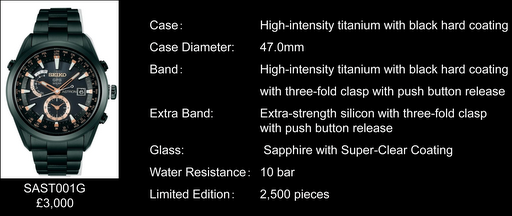A first in watches! This year at the Basel Watch and Jewellery fair, Seiko showed something that has never been seen before. If you want really precise timekeeping, wherever you are on the planet, this is the only watch for you. Introducing the Seiko GPS Solar powered Astron watch, it doesn’t even need a battery.
There are already various types of watch that receive time information from external sources: Radio-controlled, Digital GPS and others, but…
Only the new Seiko ASTRON delivers what everyone really wants: A self-powering watch that is accurate in every time zone.
To make a GPS watch, Seiko devised a system that breaks the planet up into 1 million squares and, from this database, it is able to calculate the time zone of the watch. Unlike some other watches, in particular Radio controlled ones, the Astron is able to be ajusted on the move wherever you are. It can update the time in 6 seconds and in ideal conditions will adjust the time zone in 30 seconds, a Radio controlled watch can take up to 120 seconds. It does however share the same accuracy as a radio controlled watch which is to 1 second every 100,000 years
 So what does it do? Well, the Astron recognises 39 different time zones It has a perpetual calendar so the date is always accurate, even in leap years, up to February 2100. For ‘Summer Time’ or ‘Daylight Saving Time’ you only need to press a button. Whilst travelling on planes Seiko added a ‘Flight Mode’ switch, so it can’t interrupt any of a planes systems.
So what does it do? Well, the Astron recognises 39 different time zones It has a perpetual calendar so the date is always accurate, even in leap years, up to February 2100. For ‘Summer Time’ or ‘Daylight Saving Time’ you only need to press a button. Whilst travelling on planes Seiko added a ‘Flight Mode’ switch, so it can’t interrupt any of a planes systems.
A few facts and figures about GPS and more….
The current GPS network is composed of 24 satellites in earth orbit at a height of 20,000 km. Four satellites orbit in each of six orbital planes. There are about eight other satellites orbiting as ‘reserves’. Each GPS satellite contains an atomic clock. By sending the signal that contains both its orbit position and the time, the satellite allows the receiver to pinpoint its position.
UTC (Coordinated Universal Time) was established in 1972. It is the world’s agreed standard of time, and replaced GMT. UTC’s accuracy is guaranteed by a time standard called International Atomic Time which is calculated as a weighted average of time signals from about 300 atomic clocks around the world.
As international travel and communication developed in the 19th century, 24 time zones were agreed, each representing 15 degrees of the earth’s surface. Today, national governments decide the time zone that best suits them, so the number of time zones in the world is not fixed. And not all time zones are one hour; Kathmandu is five hours and forty five minutes ahead of UTC. Delhi is five and a half hours ahead. The 39 zones in the database of Astron offer the fullest coverage in any watch today.
The Seiko Astron watches will be available in late 2012.


